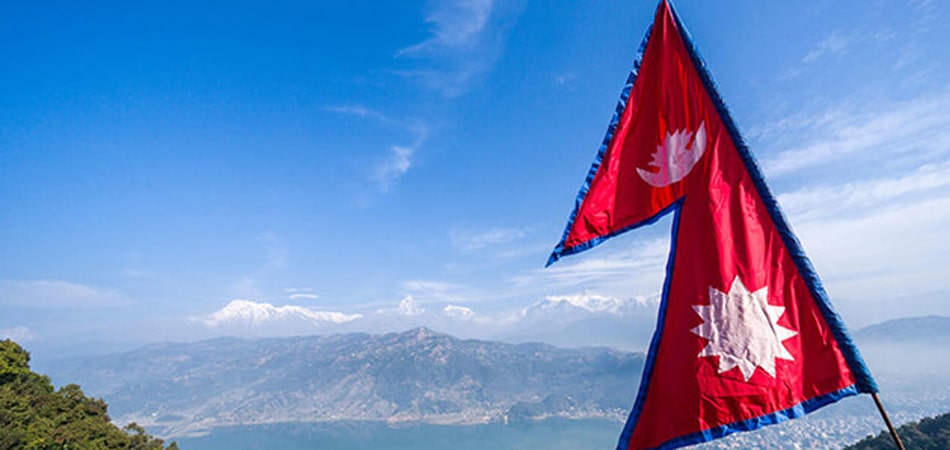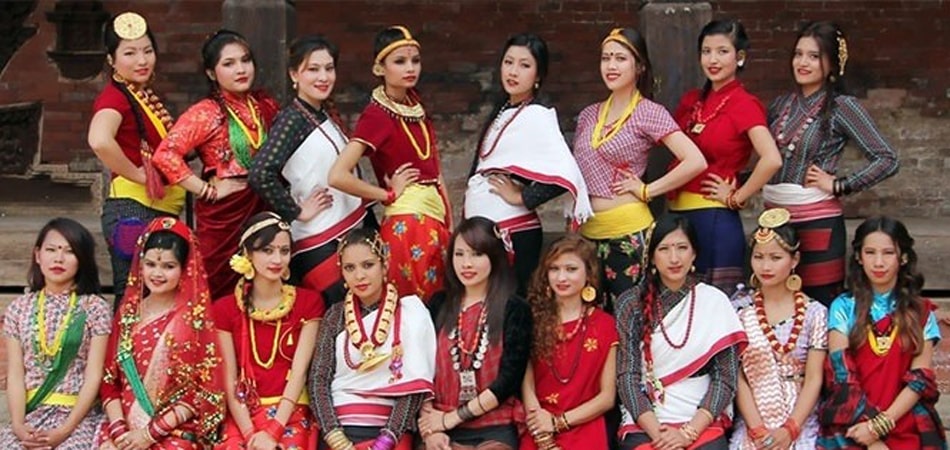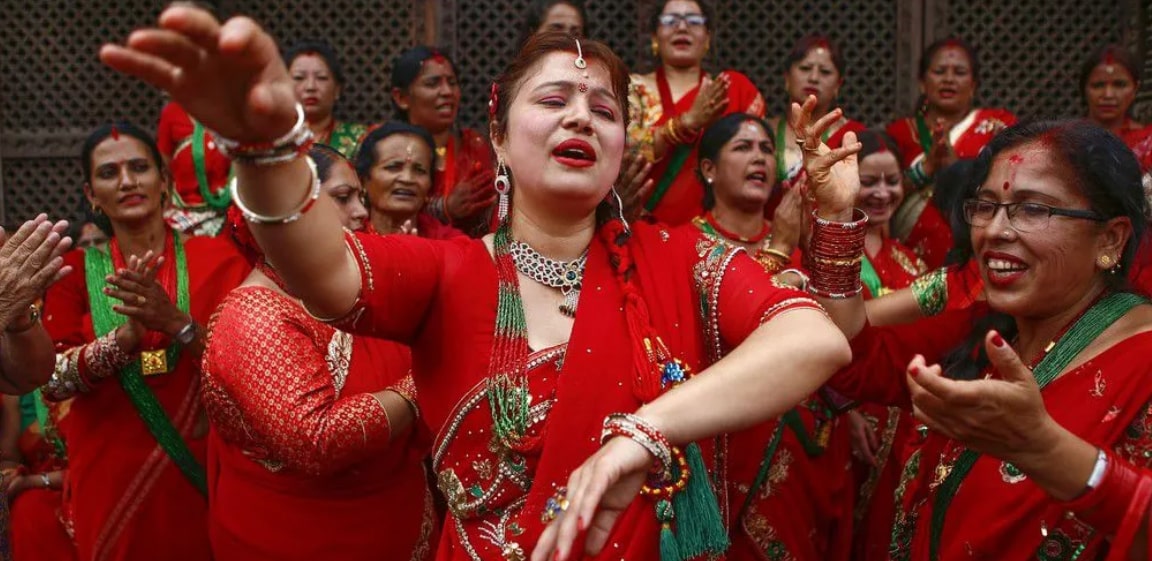
Image Credit : https://www.gonepaltours.com/nepal-national-symbols/
Are you planning a trip to Nepal on your next vacation? Are you interested in learning about the significance of the national color of Nepal? Are you interested in learning why crimson is associated with Nepalese religion and culture? This article provides deep information regarding its importance, association and uses.
The crimson red is a significant and unique symbol representing Nepal’s history, identity and culture. Crimson red is the national color of Nepal, which has been associated with Nepalese heritage and culture for centuries. The crimson color reflects the strength, bravery and sacrifices made by the Nepalese throughout history.
History and Significance of the National Color
The use of the national color of Nepal has a long history, which dates back to centuries. The color was used prominently during the movement of King Prithvi Narayan Shah in his conquest to unify Nepal.
He believed the color represented and symbolized the bloodshed in the battle as a visible sign of the soldier’s bravery, courage, passion, and determination. The color is also associated with the color of the rhododendron, which is the national flower of Nepal.
Cultural and Religious Associations with the National Color

Image Credit : https://www.trendingnetnepal.com/cultural-dresses-of-nepal/
The national color of Nepal is deeply rooted in the culture of Nepal and holds religious significance for the Nepalese people. The crimson color is deeply associated with Nepal’s rich history and tradition and is used in several aspects of Nepalese culture, religious ceremonies and traditional clothing.
Religious Significance
The crimson color has religious significance and is considered a sacred color in Hinduism. The color is associated with the principal gods and goddesses of the religion.
Apart from Hinduism, the crimson color is also associated with Buddhism, another major religion in Nepal. The Nepalese national color in Buddhism represents a form of enlightenment. Buddhist nuns and monks can be seen wearing crimson-colored robes as a symbol of dedication to the teaching of Lord Buddha.
Cultural Significance
In Nepali culture, the crimson color represents strength and symbolizes the bravery of the warrior who fought for the country. Additionally, the national color of Nepal also represents the resilience and beauty of the Nepalese people.
Color is an integral part of Nepali dress and is associated with several traditional Nepali attire. The Nepali tradition is a symbol of the country’s rich cultural heritage, and the usage of the crimson color adds elegance and beauty to it.
As a result, the crimson color is also widely used in traditional dresses of Nepal, such as the Daura-Suruwal, the national dress of Nepal. Similarly, the national color of Nepal is also used in dresses like Gunyo Cholo, which features a long skirt and a blouse. The dress is usually worn during special occasions and festivals. The color is believed to ward off evil and harmful energy and brings prosperity and luck to the newlyweds.
Apart from traditional Nepali dresses, the crimson color is also used in modern Nepal fashion. The color is mainly used in semi-formal and formal dresses such as sarees and suits, adding sophistication and elegance.
Usage of the National Color of Nepal in Festivals

Image Credit : https://www.onlinektmnp.com/teej-the-womens-day-in-red/
The national color of Nepal plays a significant role in Nepali festivals and traditions. The crimson color is widely used in festivals such as Dashain and Tihar, which are some of the biggest festivals celebrated in the country. The color has been an integral part of the identity and heritage of Nepal, which has given its importance and significance throughout the year.
Dashain
Dashain is one of the important festivals celebrated in Nepal, which lasts for ten days. The festival is celebrated to commemorate the victory of good or evil. Families and relatives must come together to enjoy traditional foods and drinks and exchange gifts. Most religious sites and temples are decorated with crimson banners and flags during the festival.
The color is used to create a festive atmosphere during the auspicious occasion. One of the essential rituals of the festival, which is putting tika and receiving a blessing from the elders, includes the use of crimson color. It is regarded to embody the blessings and power of Goddess Durga.
Tihar
Tihar is the festival of lights, which is celebrated for five days. Each of these days has a different significance, and the national color of Nepal adds a unique aspect to it. The festival’s first day is “Kaag Tihar,” People worship crows as they believe they are messengers of the gods. The second day is known as “Kukur Tihar,” People worship the dogs.
Gai Tihar falls on the third day of the festival. On this day, cows are worshiped as sacred animals in Hinduism. Similarly, the fourth day, “Goru Puja,” is dedicated to oxes. During both festivals, the cows and bulls are worshiped with flower garlands and crimson red and other colors.
The fifth and last day of the festival is known as Bhai Tika, during which the sisters apply colorful tika on their brother’s forehead. One of the color used is crimson color.
National color of Nepal is believed to be auspicious and represents purity, power, and protection. The ritual also consists of sharing gifts and offering flower garlands. This act symbolizes the sisters’ love, respect, and gratitude towards their brothers and invoking blessings for their long and prosperous life.
Holi
Holi, a famous festival in Nepal and India, commemorates the victory of good over evil. It also marks the arrival of the spring season in Nepal. During the festival, people gather with their friends and family, throw water, and apply colored powder on one another. Among the beautiful array of colors, crimson is one of the prominent colors used during the festival. It is believed the national color of Nepal represents the joy and happiness that is associated with the festival.
If you are planning a trip to Nepal and wondering which providers to select, you can read our article to discover the top rated Nepal tour operators. They will provide you with an unforgettable experience and ensure your safety throughout the trek. Additionally, they can customize your itinerary according to your preferences and ensure that you have a hassle-free trip.
FAQs
There are three colors in the flag of Nepal such as white, blue and crimson red.
Crimson red is the national color of Nepal.
Crimson is a hue that falls within the red color family, characterized by its intense and dark shade that leans towards purple.
Nepal is officially known as the Federal Democratic Republic of Nepal.
The national motto of Nepal is “जननी जन्मभूमिश्च स्वर्गादपी गरीयसी”. The motto translates to “Mother and Motherland are greater than heaven.”